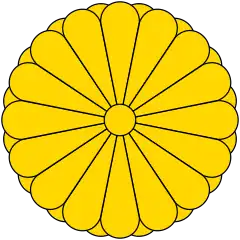
Battōtai (抜刀隊, Drawn-Sword Regiment) were a special police squad formed in Japan by the Meiji government in 1877 during the Satsuma Rebellion.[1][2] The detachment was armed with Japanese swords. The members of Battotai defeated the rebels in the Battle of Tabaruzaka. Their success in sword fighting led to a renewed interest in the art of kenjutsu, which had been abandoned after the Meiji restoration, and, as a result, the formation of modern kendo.[3][4][5][6][7]
History
During the multi-day siege by the government forces of Tabaruzaka, where the rebels of Saigo Takamori were entrenched, it turned out that the troops were suffering heavy damage from the attacks of the rebels in close combat. This was due to the fact that most of the government forces were conscripted "common people", peasants and townspeople who had never learned to fight with a sword. In a sword fight with the Saigo samurai, they invariably died. To change the situation, the police command, among which there were many people of samurai origin, approached the army commander Yamagata Aritomo with a proposal to recruit a separate squad of capable swordsmen. Yamagata gave permission, and such a detachment of one hundred people was recruited.
On March 14, 1877, Battotai, by order of the command, attacked Mount Tabaruzaka. After two days of battle with Satsuma rebels detachment suffered heavy losses of 25 dead and injured 54. Despite the fact that the sword at the end of the 19th century was considered a long-obsolete weapon, Battotai revived interest among Japanese Kenjutsu, which was abandoned after the defeat of the shogunate. The greatest supporter of the revival of kenjutsu was the "father of the Japanese police" Kawaji Toshiyoshi. He published the work "On the question of the restoration of fencing" (Japanese: 撃剣再興論 Gekiken saikō-ron), and in 1879 the police department began hiring instructors to train their officers in fencing.
References
- ↑ 日本博学倶楽部. 歴史の意外な「ウラ事情」: あの事件・あの人物の“驚きの事実”. — PHP研究所, 2001. — p. 117, p. 241 — ISBN 9784569575834.
- ↑ Hiraku Shimoda. Between Homeland and Nation: Aizu in Early Modern and Modern Japan. — Harvard University, 2005. — p. 172-173, p. 409 — ISBN 0542120526.
- ↑ Learn samurai spirit through kendo. The Jakarta Post (23 April 2000). Archived 7 October 2012.
- ↑ G. Cameron Hurst. Armed martial arts of Japan: swordsmanship and archery. — Yale University Press, 1998. — p. 157. — ISBN 0300049676.
- ↑ Ellen P. Conant. Challenging Past And Present: The Metamorphosis of Nineteenth-Century Japanese Art. — University of Hawaii Press, 2006. — p. 44-45, p. 292 — ISBN 9780824829377.
- ↑ 『警視庁武道九十年史』、警視庁警務部教養課 16-17ページ。
- ↑ Cornelia Niekus Moore, Raymond A. Moody. Comparative Literature - East and West: Traditions and Trends : Selected Conference Papers. — University of Hawaii Press, 1989. — p. 172, p. 219 — ISBN 9780824812478.
